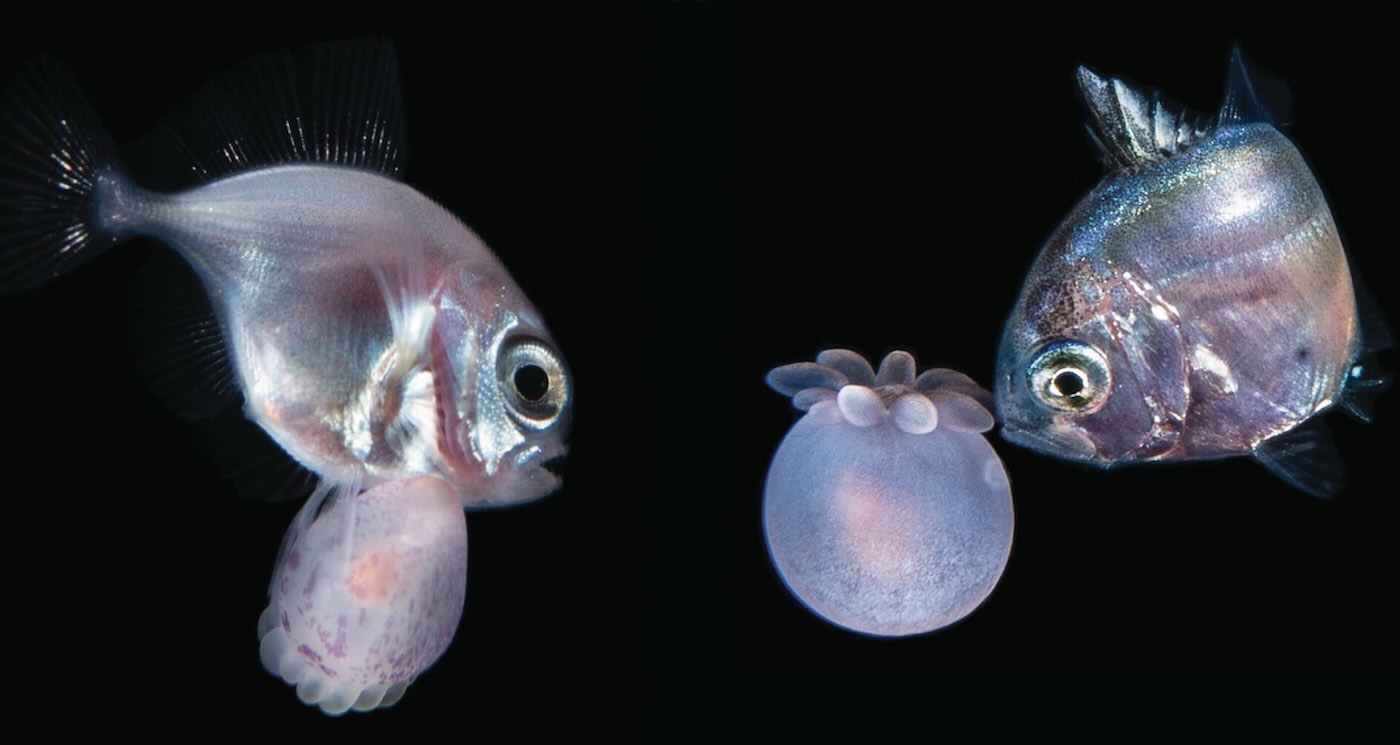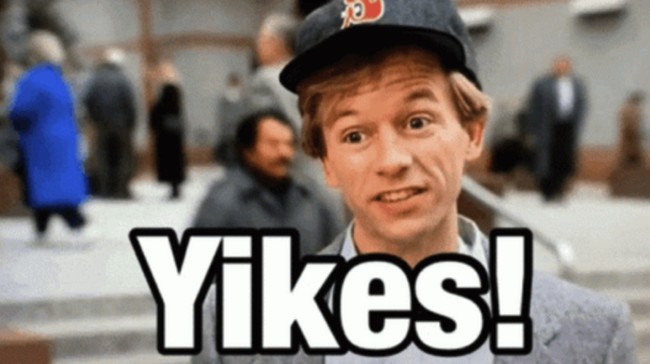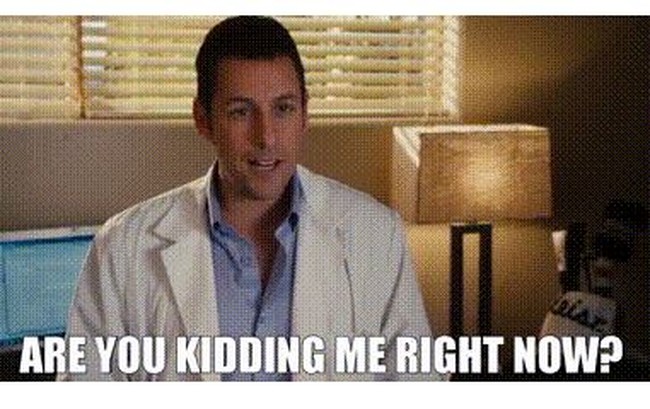
reactormag.com
Bone Lake and the Movies That Define the Erotic Horror Genre
Movies & TV
Bone Lake
Bone Lake and the Movies That Define the Erotic Horror Genre
In celebration of the release of Bone Lake, here are some of the movies that have come to define the erotic horror genre.
By Matthew Byrd
|
Published on October 9, 2025
Media: RKO Radio Pictures, Bleecker Street, Metro-Goldwyn-Mayer
Comment
0
Share New
Share
Media: RKO Radio Pictures, Bleecker Street, Metro-Goldwyn-Mayer
The twin taboos of eroticism and horror have long been powerful draws. Sex, violence, and terror are just some of the generally socially forbidden topics that can help us feel strangely alive when they are presented in the right way. At the intersection of those prohibited passions is the erotic horror genre. It’s a form of storytelling that has long argued that eroticism and horror are really just two sides of the same coin that can reveal a frightening, but alluring, new perspective on the human experience when combined.
The erotic horror genre has evolved quite a lot over the years. What was perhaps once seen as an inherently exploitative concept full of titillating terrors has gone on to help shine a light on people and passions that may have otherwise never been seen. And yet, that subgenre’s greatest power may be its inherently indefinable qualities. We know the allure of the concept on a primal level, but our desire to better understand what it really reflects about us and our world has kept erotic horror stories quite fresh over the years. Of course, they still often involve vampires.
In honor of the release of Bone Lake, we’re taking a look at some of the erotic horror movies that have come to define that controversial subgenre over the years. And while this isn’t a complete look at the history of erotic horror (that would involve hundreds of movies, many of which were designed for grindhouse patrons), these works should be considered markers that help us track the evolution of erotic horror and better understand how it has shaped culture over the years.
Cat People (1942)/Cat People (1982)
Though there were a few early examples of erotic horror spread throughout the 1930s (most notably, the criminally underrated Dracula’s Daughter), the strict enforcement of the Hays Code really spoiled what fun could have been had. It wasn’t until the ‘40s that we saw a major studio take a chance on a horror narrative fueled by sex. Even then, it remained something of an anomaly for quite some time.
Director Jacques Tourneur’s Cat People tells the story of a young woman (Simone Simon) who believes she suffers from a curse that will turn her into an animal if she experiences sexual pleasure. It’s a shockingly effective bit of commentary on sexual oppression that just so happens to be one of the most influential horror films of its era (it’s even sometimes credited with inventing the jump scare). Just as Tourneur hides many of the tale’s terrors in the shadows, Cat People’s narrative deftly subverts the conditions of the production code era by focusing almost entirely on the sex that isn’t being had and the psychological impact of societal repression.
That’s what makes Paul Schrader’s 1982 remake of Cat People something of a contradiction. Much like the 1981 remake of The Postman Always Rings Twice, it embraces the more overt sexuality and violence of ‘80s erotic thrillers. In doing so, it makes us to wonder if there are times when you can derive more sexual tension from the things you don’t show. On the other hand, Schrader’s Cat People does have a rocking David Bowie song on the soundtrack and a subplot involving the complex mating rituals of werecats. So it does have that going for it. Which is nice.
The Vampire Lovers (1970)
Crafting a shortlist of defining erotic horror movies is really a matter of deciding how many erotic vampire films you want to highlight. For instance, this spot could have easily gone to 1960s Blood and Roses: the adaptation of the revolutionary vampire novel Carmilla that the aforementioned Dracula’s Daughter wasn’t quite allowed to be in its time. Yet, it was really The Vampire Lovers that opened so many doors for that genre.
Yes, The Vampire Lovers is also an adaptation of Carmilla, though this adaptation had the advantage of being produced by Hammer Film Productions: the legendary horror house that had previously found success inserting more blood and cleavage into their gothic horror releases and was now ready to see just how generous the censors could be. By arguing that The Vampire Lovers’ portrayal of lesbian vampires was based on a book and must therefore be art, Hammer was able to get a well-produced and incredibly sexual work of horror out to a fairly wide audience. The buzz it generated suddenly had other studios asking questions about what they could get away with and how much audiences really wanted to see.
The Devils (1971)
In 1971, Warner Bros. gave director Ken Russell millions of dollars to tell a story about a hot priest who inspires such levels of horniness that he helps reshape the political landscape of Europe and destabilizes the church in the process. The ‘70s were wild, y’all.
With its portrayals of enemas, orgies, and sacrilegious nuns, The Devils feels closer to one of the shock underground grindhouse releases of the ‘60s rather than a major motion picture from one of the largest movie studios ever. Look beyond the shocks, though, and you will find one of the most beautiful and effective portrayals of the human condition in times of strife ever put on film. It’s just a shame that the feature has historically been censored and remains incredibly difficult to watch via official means, despite numerous attempts to re-release it.
Don’t Look Now (1973)
Don’t Look Now is actually a pretty tame movie, so far as the erotic horror goes. The overt “eroticism” of this film about a couple that moves to Venice in hopes of coping with the loss of their child is largely limited to a single sex scene that is, by most standards, more realistic than incendiary. Yet, it was the reaction to that sex scene that secured Don’t Look Now’s place in the history of the genre.
The sex scene in Don’t Look Now attracted controversy before it was even seen by the public. Critics described it as being especially vulgar, and rumors that actors Donald Sutherland and Julie Christie were actually having sex on camera prompted Christie’s boyfriend at the time (actor Warren Beatty) to fly to the studio and demand the sequence be cut. Others were just shocked to see a portrayal of a woman receiving oral pleasure (shocked, I tell ya).
While Don’t Look Now is now widely considered to be one of the great works of horror, it also shows just how powerful the debate about such scenes can be and how those scenes can generate a level of controversy that dominates the conversation. As such, it helped pave the way for the erotic thrillers of the ‘80s and ‘90s that would fuel a kind of golden age for erotic movies, in general.
Possession (1981)
The eroticism of Possession is, like so many other things in the movie, a bit tough to define. This film about a couple watching their relationship slowly sink into the deepest, darkest pit you can possibly imagine will leave a mark on your soul that you’ll never quite be able to scrub off. One of the few obviously sexual scenes in the narrative is between a woman and a well-designed tentacle monster that may or may not be a manifestation of her repressed desires and shattered psychosis. You love to see it.
But director Andrzej Żuławski’s reclaimed masterpiece remains one of the most effective examples of erotic horror as a form of relationship horror. Though much has gone wrong in Mark and Anna’s marriage, there is still a boiling passion between them that may have once been expressed through sex but is now tearing through their beings in search of other outlets. The predecessor to movies like Midsommar and the recent Together, Possession shows that the sparks still fly even when we’ve lost our ability to control what they ignite.
The Hunger (1983)
In 1983, it was decided that someone should give director Tony Scott the money required to tell a story about David Bowie, Catherine Deneuve, and Susan Sarandon playing horny vampires. This decision made a lot of people very happy and has been widely regarded as a fantastic move.
Released in the early days of the ‘80s erotic thriller boom, The Hunger certainly utilizes the core tenets of the genre movement. Namely, it promises that you’re about to see some of the most attractive people in the world like you’ve never seen them before on the big screen. It is also, of course, yet another erotic vampire film. But what ultimately makes The Hunger so special is how beautiful it is. Visually, it’s one of the best-looking movies of the ‘80s. Thematically, it exhibits a surprisingly empathetic view regarding the sensuality of vampires and those who find themselves drawn to that sensuality. It argues that there is a distinction between eternal life and eternal youth, and our pursuit of the former in the fruitless pursuit of the latter is often the source of our greatest tragedies.
Hellraiser (1987)
It’s remarkable to consider that Hellraiser was not only a success in its time but went on to spawn a ten-film franchise that has found an audience across multiple eras of horror. It is, after all, a shockingly violent work that inserts terrifying demonic forces into what is essentially a sadomasochistic romance story. It’s not exactly the kind of set-up that screams “blockbuster.”
In many ways, Hellraiser feels like the culmination of the evolution of ‘80s horror. That decade saw an army of supernatural slasher films combine sex with violence in the hopes of finding an audience in theaters or at the video store. Hellraiser is often lumped together with those films, despite its heavier content and the fact that its now-iconic slasher doesn’t even appear until the final minutes. That association can partially be attributed to the more formulaic nature of many of its sequels, but even in its time, a surprising number of people were able to process Hellraiser as “one of those” movies. That reception speaks to the ways horror helped change the conversations over what people were not just willing to see but what they desired to see.
Species (1995)
There were beautiful naked women from space movies before Species (such as the infamous Lifeforce), and there have been beautiful naked women from space movies since Species (the excellent Under the Skin). What sets Species apart from the pack is how wildly successful it was.
Species grossed over $113 million in theaters in 1995. That’s to say nothing of the uncalculated amount of money it made on home video. It was a massive financial hit in the way that few other erotic horror films have ever been, and it is the culmination of a time when erotic films (specifically thrillers) were finding wide audiences, partially due to the promise of celebrity skin. Alyssa Milano’s Embrace of the Vampire became a massive direct-to-video hit that same year due largely to the power of the same promise.
Yet, this was just about the peak of that era so far as revenue returns go. The erotic horror genre would go relatively dormant for quite some time. When it returned, it would take a somewhat familiar (though tonally different) form.
Thirst (2009)
While the 2000s weren’t entirely devoid of erotic horror movies, audiences, studios, and even some critics began to slowly reject them. Erotic thrillers were no longer guaranteed blockbusters, and works like Claire Denis’ Trouble Every Day were generally seen as extremist works for niche audiences. Even casual sex and nudity presented for pleasure in horror had begun to fade as a new wave of torture porn movies and remakes dominated the scene. When the genre mounted a comeback, it returned via a familiar format (vampire erotica) but a somewhat surprising venue (film festival circuits).
In director Park Chan-wook’s Thirst, a priest contracts vampirism while searching for a cure to a rapidly spreading virus. Haunted by his desire for human blood, he soon finds a modicum of comfort by engaging in a torrid affair with the wife of his childhood friend. What follows is not just a fascinating examination of what vampirism reveals about the infected souls but arguably Park Chan-wook’s sexiest film. Yes, that includes The Handmaiden.
Thirst won the Jury Prize at the 2009 Cannes Film Festival and was a strong contender for the Palme d’Or. While previous erotic films had done well on the festival scene before, Thirst marks the moment when erotic horror films started to become arthouse darlings rather than skin-sational blockbusters. An arbitrary distinction, perhaps, but a somewhat appropriate honor for a genre that had contributed so much to the evolution of film.
The Shape of Water (2017)
No, The Shape of Water is not generally considered to be a horror film. However, this story of a woman who becomes infatuated with an amphibious humanoid creature is undeniably erotic and can certainly trace its roots to the horror genre (specifically, Creature from the Black Lagoon). Though the work drew some criticism over the idea it suggests that “others” can never really fit into the rest of the world, it is an emotionally and visually striking fairy tale set against the backdrop of a world that is desperately trying to excise the marginalized, even as the need for love feels so vital in a world on the brink of destroying itself.
The Shape of Water stunned many by becoming a box office and critical success at a time when we were seemingly far removed from the days of erotic films (much less erotic films with a fantastical lean) swimming in the mainstream. We’ve since been treated to a greater variety of erotic movies made by those interested in testing the waters of the genre in hopes that they will catch the momentum of the pendulum swinging back to the time when audiences craved such works.
Bone Lake (2025)
Modeled after the erotic thrillers of the ‘80s and ‘90s, and inspired by modern works of social and relationship horror (Speak No Evil, Barbarian), Bone Lake asks, “What if the ‘we saw you from across the bar’ couple turned out to be as nefarious as you suspect?” It follows two couples who are (seemingly) accidentally forced to share a cabin for the weekend, only to find themselves caught in a series of sexually driven mind games that threaten to unravel themselves and their relationships.
With its emphasis on the darker sides of modern relationships and the general anxieties about sex in current times, Bone Lake feels like an honest attempt to discover what a contemporary erotic horror film that represents and speaks to its audience looks like. Though it is unlikely to single-handedly bring back the glory days of the genre, it is another compelling piece of the puzzle. The slow revival of that format can certainly be attributed to the desire to find the next great erotic hit, but it is rooted in the idea that there are fundamental truths about the human experience that only erotic horror can reveal. So long as there are stories to tell in that realm, people will find ways to share and experience them.[end-mark]
The post <i>Bone Lake</i> and the Movies That Define the Erotic Horror Genre appeared first on Reactor.















/https://tf-cmsv2-smithsonianmag-media.s3.amazonaws.com/filer_public/af/08/af089792-e9d9-4b22-b4b4-dffa8195a9e5/smithmag-podcast-s04-ep14-lakota-article.jpg)

